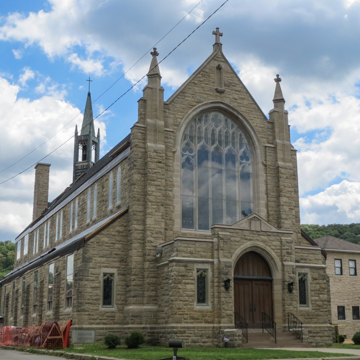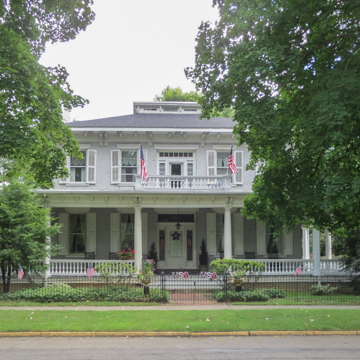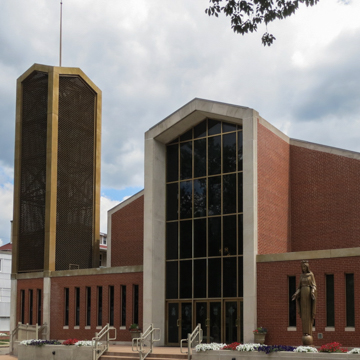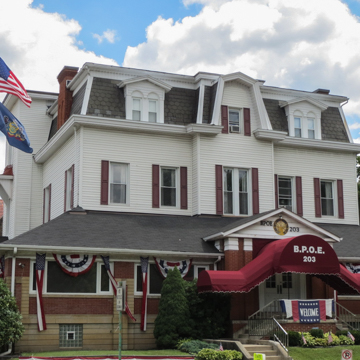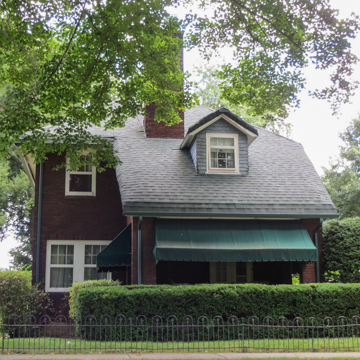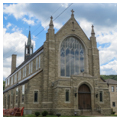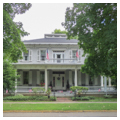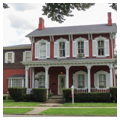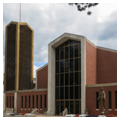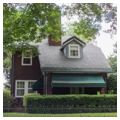North Water Street, parallel to the eastern bank of the Allegheny River and visible from both the bridge and the opposite shore, is a showpiece for the city. Most of Kittanning's largest, impressive houses are found on this quiet street, as are a number of religious structures. As the area has developed continuously from the mid-nineteenth century, no single architectural style dominates. The YMCA (138 N. Water Street), for example, is housed in a brick Chateauesque house; Elks Club No. 203 (1876; 140 Arch Street) is located in a Second Empire former residence; the former Simon B. Truby House at 280 N. Water Street is a large Colonial Revival (1864); an English cottage–style house, the C. H. Ferne House, with faux thatching (c. 1920) anchors Water Street's corner with Vine Street; and a red brick Italianate house c. 1880 (340 N. Market Street) completes the collection of interesting houses on the street. Three significant religious structures are also found in the district: St. Paul's Episcopal Church (1912–1913) at 112 N. Water Street is a stone Gothic Revival church; and the First United Methodist Church (c. 1950; 332 N. Water Street) was originally a synagogue (Knesset Israel) designed by Alexander Sharove of Pittsburgh in a Frank Lloyd Wright–inspired style. In sharp contrast to the long, low shape of Sharove's geometric design is Saint Mary, Our Lady of Guadalupe Roman Catholic Church at 101 W. High Street (1962–1963, Elmer Dattola Jr. and George Ruscitto), which, while also dating from the mid-twentieth century, emphasizes the vertical with its bell tower and two-story entrance window. At the north end of the street, a c. 1940 group of ten trailers, all of the same general appearance, has an exquisite riverside view. Trailers comprised 5.1 percent of the commonwealth's housing units in 1990, and are one of the most prevalent forms of shelter in rural areas.
You are here
North Water Street District
If SAH Archipedia has been useful to you, please consider supporting it.
SAH Archipedia tells the story of the United States through its buildings, landscapes, and cities. This freely available resource empowers the public with authoritative knowledge that deepens their understanding and appreciation of the built environment. But the Society of Architectural Historians, which created SAH Archipedia with University of Virginia Press, needs your support to maintain the high-caliber research, writing, photography, cartography, editing, design, and programming that make SAH Archipedia a trusted online resource available to all who value the history of place, heritage tourism, and learning.









